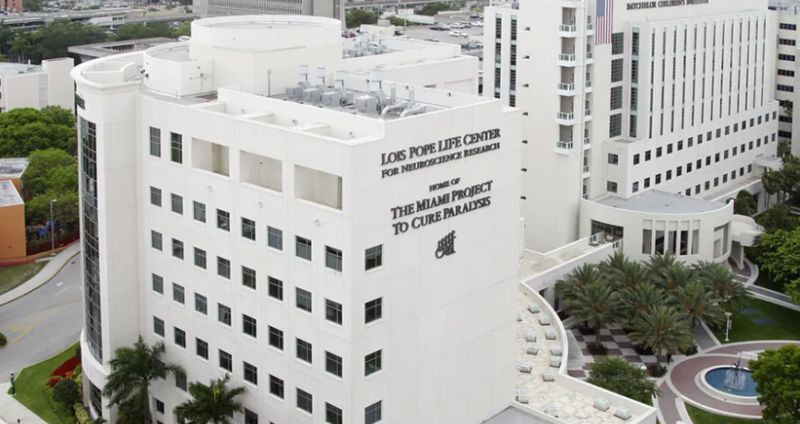Neuralink Expands Clinical Trials to Miami
Neuralink Expands PRIME Study to Miami: A Major Step Towards Brain-Computer Interface Advancements
Elon Musk’s Neuralink is making significant strides in its mission to restore mobility and communication abilities for people with paralysis. The University of Miami Miller School of Medicine, specifically The Miami Project to Cure Paralysis and the Department of Neurological Surgery, has been selected as the second U.S.-based site for Neuralink’s groundbreaking PRIME Study (Precise Robotically Implanted Brain-Computer Interface). This study aims to test the safety and functionality of Neuralink’s N1 Implant, a cutting-edge brain-computer interface (BCI) designed to enable individuals with severe neurological impairments to control digital devices using their thoughts.
This development underscores the growing collaboration between academia and private technology firms in the pursuit of medical breakthroughs. By integrating advanced robotics and neuroscience, Neuralink is pushing the boundaries of what is possible in neurorehabilitation. The inclusion of Miami in this study is a testament to the university’s longstanding commitment to neurological research and its track record in spinal cord injury treatments.

The Purpose of the PRIME Study
The PRIME Study is an early feasibility study designed to assess Neuralink’s N1 Implant and its ability to establish a wireless digital connection between the brain and external devices. Traditionally, brain-computer interfaces have required cumbersome wires and invasive procedures. Neuralink’s approach eliminates these barriers by using a fully implantable, wireless system that can process neural signals in real-time.
The key objectives of the study include:
- Evaluating the safety of the N1 Implant when placed within the brain.
- Testing its ability to enable paralyzed patients to control external devices.
- Assessing the performance of Neuralink’s R1 Robot, a state-of-the-art surgical robot responsible for precisely implanting the device’s ultra-fine electrode threads.
By conducting this study, Neuralink hopes to pave the way for a future where individuals with paralysis can regain independence through thought-controlled interactions with technology.
The Role of The Miami Project to Cure Paralysis
The Miami Project to Cure Paralysis, part of the University of Miami’s Miller School of Medicine, has long been a leader in the field of spinal cord injury research and treatment. With decades of expertise in neurorehabilitation, the project has pioneered numerous therapies aimed at restoring motor functions in individuals with severe neurological conditions.
Dr. W. Dalton Dietrich, scientific director of The Miami Project and co-director of the University of Miami Institute for Neural Engineering, expressed enthusiasm about the collaboration with Neuralink:
“We are very excited about working with the Neuralink team. This announcement is a testament to our multidisciplinary approach for advancing the latest research in neural interfaces and neurorehabilitation.”
The study will be conducted at UHealth Tower, the flagship hospital of the University of Miami Health System. The research team will include experienced neurosurgeons, neuroscientists, and biomedical engineers, ensuring a rigorous and scientifically sound approach to testing Neuralink’s technology.
The Medical Team Leading the Study
Several prominent figures in the field of neurological surgery will oversee the implant procedures and research efforts at the Miami site. Key members of the study include:
- Dr. Jonathan Jagid, M.D. – Principal investigator of the trial, professor of clinical neurological surgery, neurology, and orthopedics and rehabilitation.
- Dr. Allan Levi, M.D., Ph.D. – Co-investigator, professor, and chair of neurological surgery.
- Dr. Michael Ivan, M.D. – Co-investigator, associate professor of neurological surgery.
- Dr. Seth Tigchelaar, M.D., Ph.D. – A neurosurgery resident at the Miller School who will oversee the surgical approaches used in the study.
Dr. Levi emphasized the impact this research could have on individuals with spinal cord injuries and amyotrophic lateral sclerosis (ALS):
“This study will use the latest technological advances in BCI approaches for improving function and quality of life in individuals living with the consequences of chronic spinal cord injury, as well as ALS.”
Neuralink’s Advanced Technology: N1 Implant and R1 Robot
The success of Neuralink’s PRIME Study hinges on two key technologies: the N1 Implant and the R1 Robot.
- N1 Implant: A small, coin-sized device implanted in the brain, designed to decode neural signals and translate them into digital commands. Unlike traditional BCIs, the N1 Implant is wireless, allowing users to interact with devices seamlessly without the need for physical movement.
- R1 Robot: A precision surgical robot that autonomously implants the N1 device’s electrode threads into targeted areas of the brain. These threads are ultra-thin—thinner than a human hair—ensuring minimal tissue damage and high-resolution neural recording.
The combination of these technologies allows for unprecedented levels of accuracy and efficiency in brain-computer interfacing, making it possible for patients with severe motor impairments to communicate and interact with the digital world in ways never before imagined.
Patient Selection for the Study
Neuralink’s PRIME Study is currently seeking participants who meet specific criteria. The ideal candidates are individuals with limited or no ability to use both hands due to either:
- A cervical spinal cord injury, which affects movement and sensation below the neck.
- ALS (Amyotrophic Lateral Sclerosis), a progressive neurological disease that severely impacts motor functions.
Those interested in participating can apply through Neuralink’s United States Patient Registry, which aims to identify suitable candidates for current and future clinical trials.
Why Miami?
The selection of the University of Miami as a PRIME Study site was influenced by multiple factors, including its reputation in spinal cord injury research and extensive experience conducting clinical trials.
Dr. Allan Levi highlighted the significance of this partnership:
“I think it has a lot to do with the reputation of The Miami Project to Cure Paralysis, our lengthy history of doing clinical research with spinal cord injury and other types of neurological diseases.”
Miami’s involvement in this study reinforces its position as a leading research hub for neurological disorders and further establishes its role in the development of next-generation medical technologies.
Future Implications of Neuralink’s Research
The advancements Neuralink is making in brain-computer interface technology hold immense potential for the future of medicine and human-computer interaction. If successful, the PRIME Study could lead to:
- Enhanced mobility solutions for individuals with paralysis, allowing them to control prosthetic limbs, wheelchairs, and other assistive devices.
- Improved communication for individuals with ALS, enabling them to express themselves through thought-based text or speech synthesis.
- Potential cognitive enhancements, opening the door for further exploration into brain augmentation and neurotechnology applications.
While still in the early stages, Neuralink’s research represents a major leap forward in the field of neurotechnology. The success of the PRIME Study could mark the beginning of a new era where individuals with severe neurological impairments regain independence through direct brain-machine communication.
Conclusion
Neuralink’s collaboration with The Miami Project to Cure Paralysis and the University of Miami is a groundbreaking step toward unlocking the full potential of brain-computer interfaces. By testing the N1 Implant and R1 Robot in real-world conditions, this research aims to provide life-changing solutions for individuals with paralysis and neurodegenerative diseases.
As the study progresses, its findings could shape the future of neurorehabilitation, paving the way for new medical applications that redefine the boundaries of human capability. For now, all eyes are on Miami as Neuralink pushes forward with one of the most ambitious neuroscience projects of the decade.
Share this content:






















Post Comment